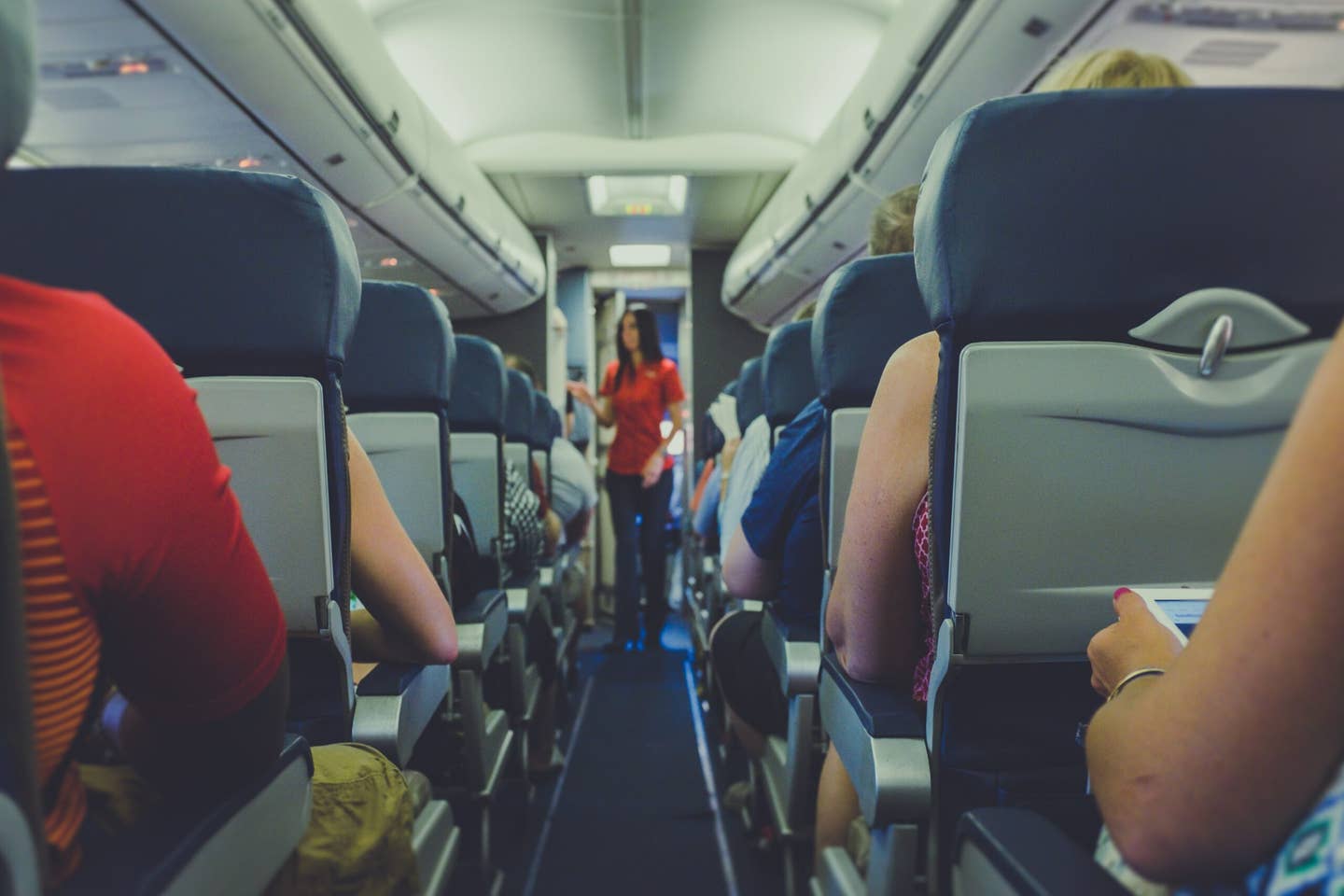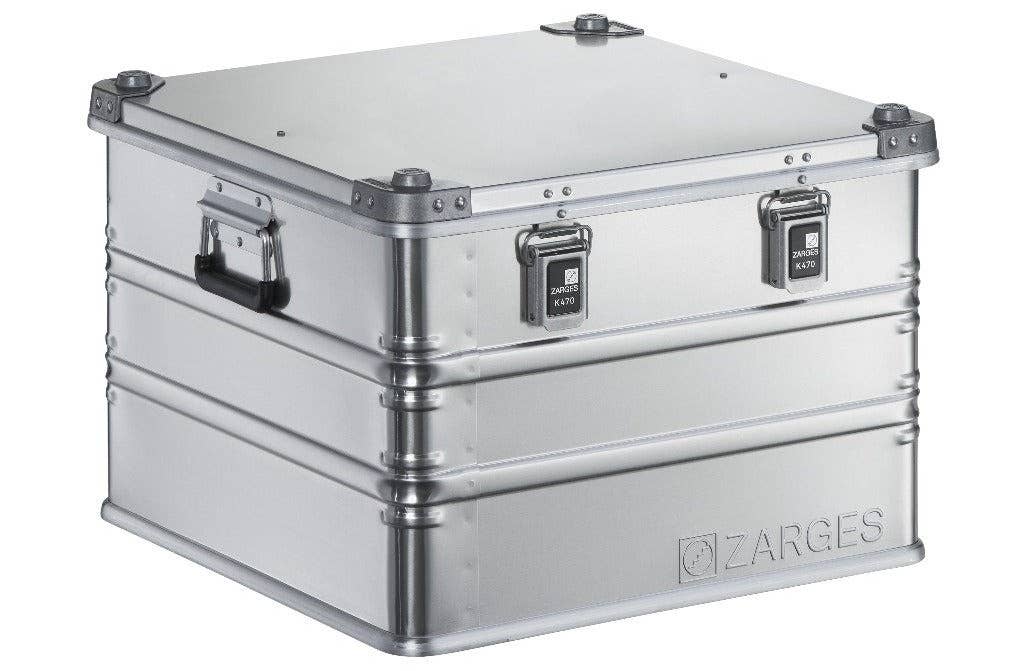How to Become a Flight Attendant
Start your flying career with this step-by-step guide.

A flight attendant is shown here explaining airline safety protocols. [Credit: Unsplash]
Becoming a flight attendant is a dream job for many. The allure of getting paid to travel while having a flexible schedule feels exciting and aspirational. Since a college degree isn’t required, it’s also an accessible option for people of all educational backgrounds.
While a college degree isn’t mandatory, there are certain requirements applicants must meet to qualify for the role of a flight attendant. This guide will help you determine if you have what it takes to pursue this unique career path.
What Is a Flight Attendant?
Flight attendants are essential crewmembers responsible for ensuring passenger safety and comfort during flights. They handle all kinds of safety and service related tasks, such as assisting with boarding, providing in-flight service, and taking charge in emergencies.
A significant part of flight attendant training is learning how to respond to unexpected scenarios such as medical emergencies, in-flight fires, and aircraft evacuations. While these situations are not a normal part of day-to-day operations, crewmembers need to be prepared to handle anything that could come up during a flight.
Flight attendants need to have strong customer service skills. They also need to be highly adaptable. Irregular hours, changing schedules, and extended periods away from home are all normal parts of working as a flight crew member.
What Do You Need to Be a Flight Attendant?
To become a flight attendant, a few basic requirements must be met:
- Age: Most airlines require applicants to be at least 21 years old.
- Education: Most airlines require a minimum of a high school diploma or GED. A college degree can make a candidate more competitive in the hiring process, but is not required.
- Physical requirements: Height and reach requirements vary by airline. For example, United Airlines specifies a height between 5-foot-2 and 6-3 without shoes.
- Language skills: English proficiency is mandatory. Fluency in other languages can make an applicant more competitive, especially at airlines that serve international destinations. Bilingual flight attendants can sometimes receive additional pay for their skills.
- Background checks: Since flight attendants are granted access to secure areas and sensitive information, they must pass federal background checks, fingerprinting, drug screenings, and medical evaluations.
- Training: Airlines conduct flight attendant training sessions for new hires that range from two to eight weeks in length. Applicants have to pass all required tests and graduate from training to be formally hired by the airline.
Beyond these foundational requirements, airlines prioritize hiring candidates with customer service experience. Prior work in hospitality, healthcare, tourism, retail, or similar industries can help you stand out.
What Is the Average Flight Attendant Salary?
Salaries vary based on experience, airline, and location. As of 2025, the average annual pay for a flight attendant in the United States is approximately $47,079 according to ZipRecruiter.
Flight attendants don’t work a typical 40-hour week and are usually paid an hourly rate for flight hours flown in a month. Their paycheck includes additional pay for things such as per diem and bonuses. Most flight attendants fly around 75-80 flight hours per month, although many fly more.
Hourly pay scales differ between airlines and usually have guaranteed annual increases through the 12th or 13th consecutive year of employment. For example, a flight attendant at Frontier Airlines may make $25 per flight hour their first year and $48 per flight hour by their 12th year. At Delta Air Lines, a first year flight attendant could take home an hourly rate of $32, but by their 13th year they may pocket $78 per hour or more.
Pros and Cons of Becoming a Flight Attendant
Just like with any job, there are pros and cons to working as a flight attendant.
Pros
- Travel opportunities: Explore new destinations and cultures. Get paid to travel rather than having to save up money and vacation time to see new places.
- Flexible schedule: Enjoy nontraditional work hours and extended time off. The longer you work for an airline and build seniority, the easier it becomes to customize your schedule exactly how you like. Take two weeks off if you like, or fly for two weeks straight. The possibilities are endless.
- Benefits: Access classic workplace benefits such as health insurance and retirement plans, and take advantage of discounted or free flights for friends, family, and yourself.
Cons
- Irregular hours: Especially as a new flight attendant, you will work nights, weekends, and holidays. Maintaining regular routines and sleep schedules can be a challenge.
- Physical demands: The job of a flight attendant is very physical, with a lot of time spent on your feet. Pushing beverage carts, moving luggage, and managing challenging passengers can all take a toll.
- Time away from home: There will be many nights in hotels and long days on the road. While it’s an exciting job, it can also be lonely.
8 Steps to Becoming a Flight Attendant
Becoming a flight attendant takes patience and persistence. It’s a highly sought after job and the pool of applicants is enormous at any airline. Even if your application is accepted, the process of interviewing, training, and onboarding with an airline can take several months to complete.
With so many candidates vying for so few jobs, be open to applying to more than one airline, and don’t get discouraged if you aren’t invited to interview right away. Sometimes spots fill up and applications go unread. Most airlines allow for reapplication after a few months. Keep your résumé updated so you’re ready the next time the window opens.
Step 1: Obtain a High School Diploma or GED
Meeting the foundational requirements is a must. Pursuing a college degree isn’t necessary, but if you have one or are close to graduating, highlight that experience on your résumé. Further education is always a plus.
Step 2: Gain Customer Service Experience
The best way to stand out in the hiring process is to show you have real experience and interest in customer service. Roles in hospitality, retail, or any customer-facing position show the airline that you have the skills to handle passengers and would be a good representative of the company.
Step 3: Research Airlines
Get to know your options. Everyone will have different priorities, but some key elements to keep in mind while you research are location, pay, and culture.
Regional airlines will have generally lower pay than major airlines, but the flights are typically shorter and the bases are smaller. Some flight attendants who have experienced both prefer the tight-knit culture of a regional. Major airlines such as United, Delta, and American have higher pay and more exotic destinations, but the trips are longer and may require more time away from home.
Airlines have designated cities where all flights originate. These are known as base cities. A flight attendant based in Chicago, for example, will always have assignments that start in that base city. Living in a base isn’t always a requirement, but it is much easier than commuting from another city. It’s recommended to choose an airline that either has a base in your city or base cities you wouldn’t mind living in.
Step 4: Apply for Open Positions
Submit applications through airline websites and career portals. Make sure your résumé highlights relevant experience and you include a cover letter expressing your interest.
Step 5: Prepare for Interviews
Be ready to discuss scenarios showcasing your customer service and problem-solving skills. Study up on best practice for job interviews and research the airline thoroughly.
A popular technique for structuring responses to scenario-based questions is the “STAR” method—briefly breaking down the situation, task, action, and result. As an example, if you’re asked to share how you’d deal with a difficult passenger, you can talk about a time you defused a tense situation at work. The task or objective was to make a customer happy, you took action by solving their problem, and the result was that the customer left a five star review.
The last round of flight attendant interviews is often in person in a group setting, and offers to attend training can be handed out on the spot. When it comes to details such as dress code and meeting times, follow any instructions given to the letter. Being even a minute late shows the airline you’ll be late on the job, and you likely won’t even be allowed into the interview room at that point.
In a flight attendant interview, being warm and friendly toward other candidates and those conducting your interview is just as important as having great answers prepared. Keep your professionalism in check, but don’t be afraid to let your personality shine through.
Step 6: Complete Airline Training
After a successful interview process, a conditional job offer will be extended. If you attend and pass the airline’s training program, you’ll officially become a flight attendant. Training consists of learning and being tested on safety protocols, emergency procedures, federal aviation regulations, and customer service.
Step 7: Obtain FAA Certification
Before you begin working, your airline will help you secure the necessary certifications to make you legal to work on board its aircraft. Flight attendants must submit their personal information to the FAA and receive security clearance to enter protected parts of the airport.
Step 8: Begin Your Career
Each airline operates a little differently, so where you go from here depends on your company. Many new flight attendants begin their career on reserve status, essentially on call, before moving up to having a set schedule. Airline hierarchy is based on seniority, so the longer you stick with the job, the better it gets.
Why Becoming a Flight Attendant Is a Worthwhile Career Choice
If you’re passionate about travel and customer service, being a flight attendant is a dynamic and fulfilling career. As a flight crewmember, you’ll have memorable experiences, meet diverse people, and develop valuable skills. While there are challenges, the rewards make it an incredible profession.
FAQ
How long does it take to become a flight attendant?
From initial application to completing training, the process usually takes at least three or four months.
How much do flight attendants get paid?
Flight attendant annual salaries range from $20,000 on the low end to over $100,000 on the high end. Total take-home pay depends on the flight attendant’s experience, airline, the number of hours they fly, and the types of trips they work.
What are some of the bigger challenges of being a flight attendant?
Some challenges of being a flight attendant can include dealing with difficult passengers, responding to emergencies, and unpredictable schedules.

Sign-up for newsletters & special offers!
Get the latest FLYING stories & special offers delivered directly to your inbox






